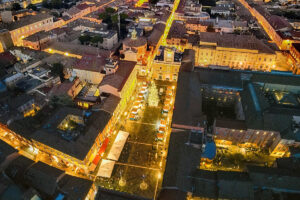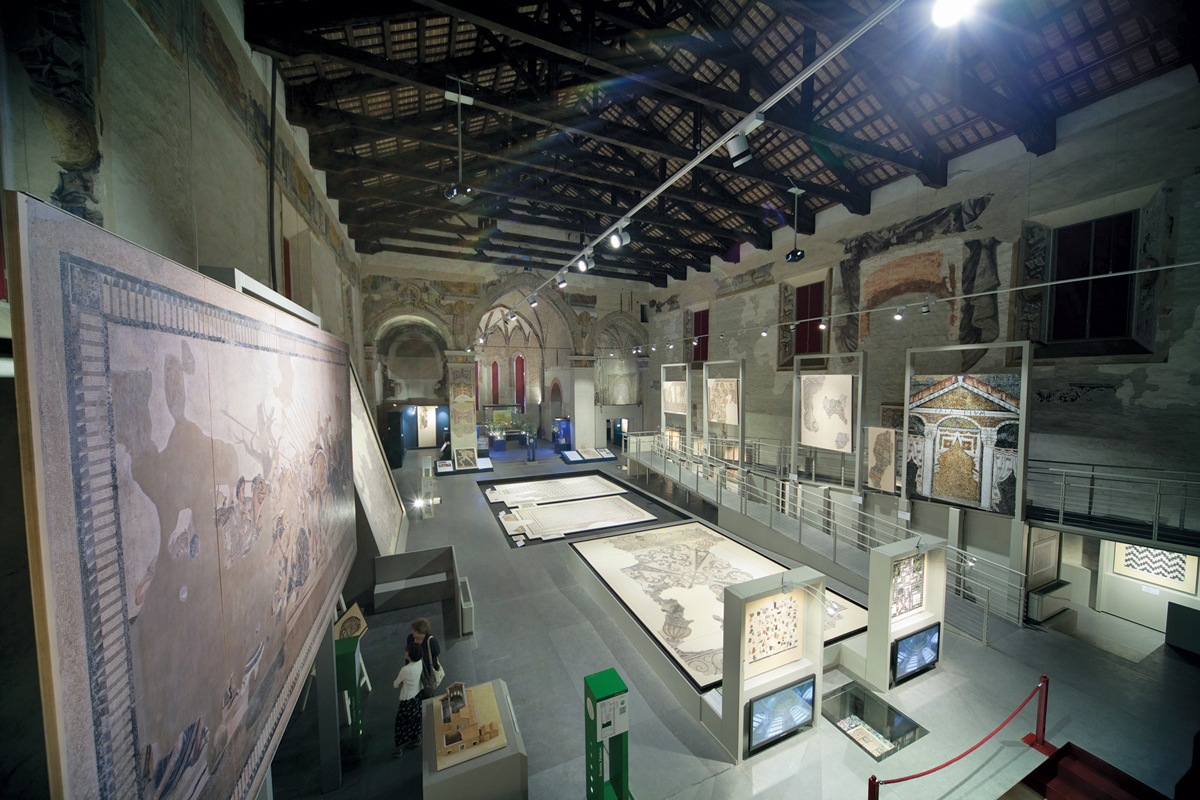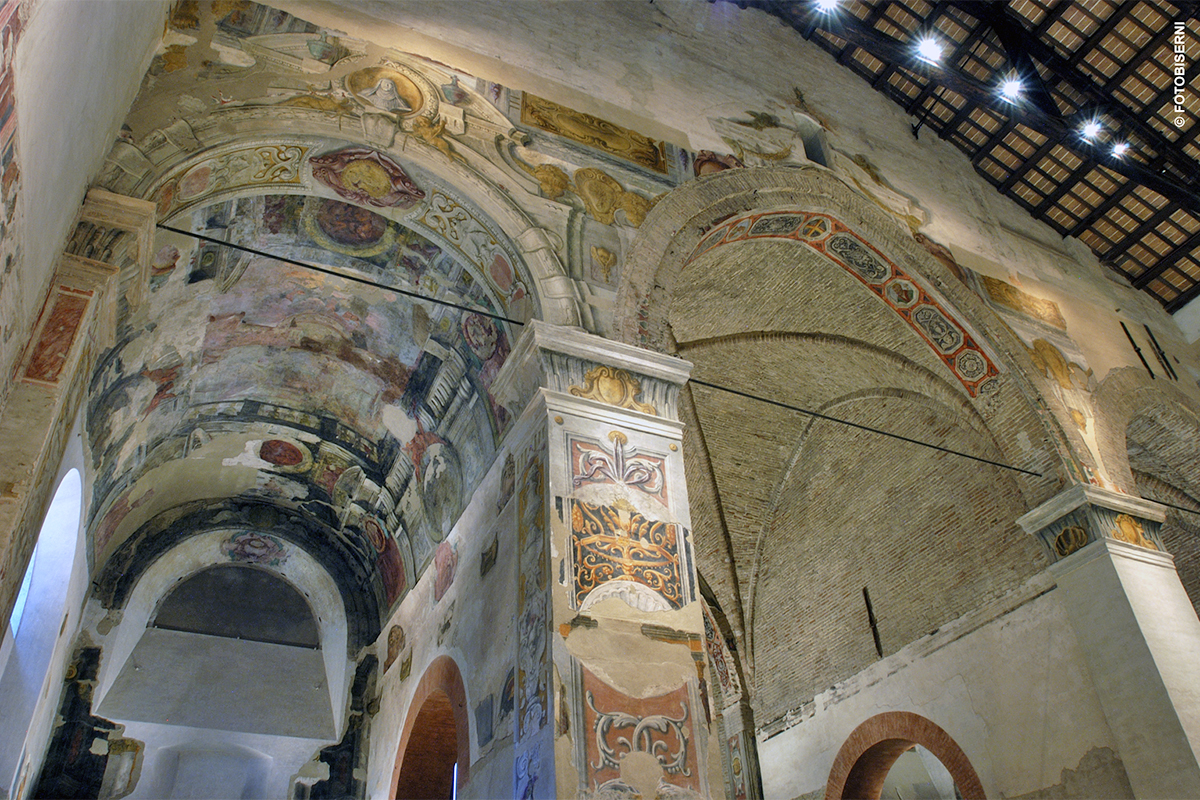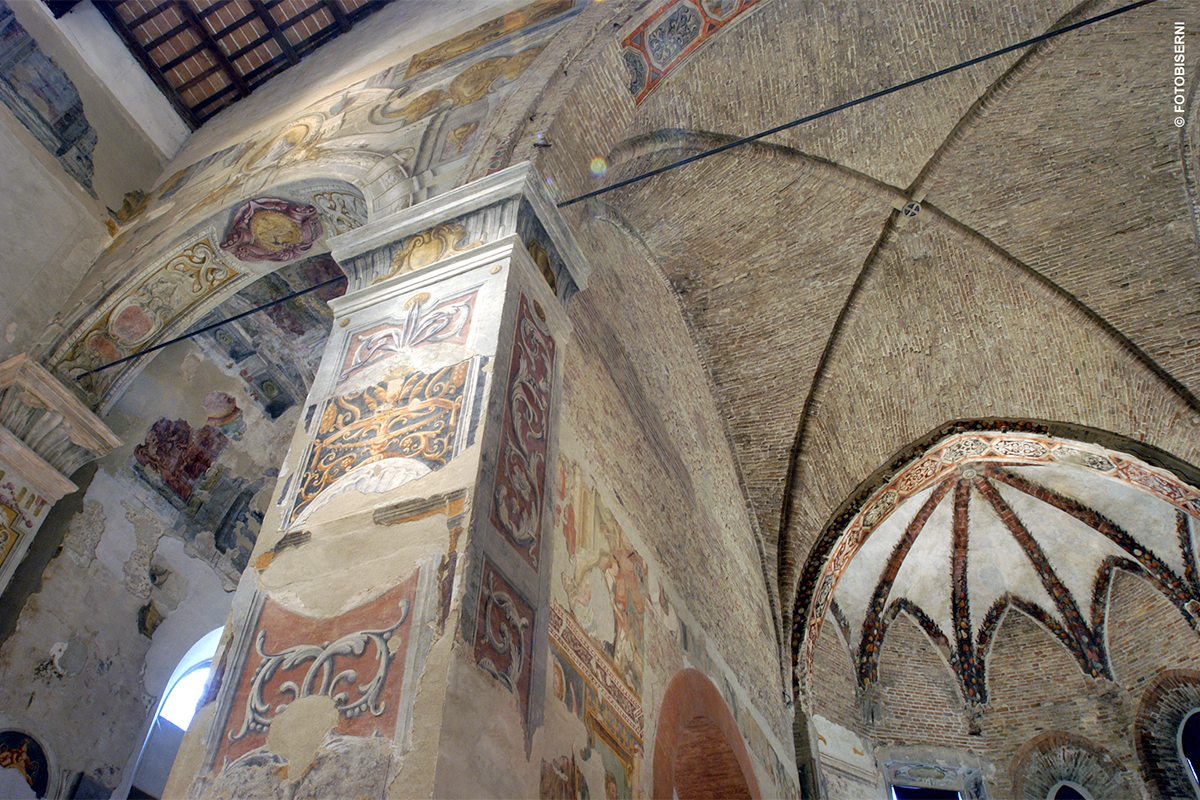Just a few metres from the Classense Library, right in front of the Church of San Romualdo, there is the CHURCH OF SAN NICOLÒ, former house of the Tamo Museum.
The church was built as a homage to St. Nicholas (or Nicolò), the patron saint of Bari. The church, along with the adjacent monastery, was built around the second half of the 13th century to host the Hermits of St. Augustine in Ravenna.
The new building replaced the former Church of St. Nicholas of the Brittinians or “in vineis” dating back to the 8th century AD, located right outside the city walls.
A troubled history of changes and restorations
Over the centuries, the building underwent various changes. In the 14th century, the church was rebuilt and two centuries after, a bell tower was added. Since then, it had maintained its one-nave structure with a polygonal apsis, marked by a Gothic architectural style and a ceiling with cross vaults.
In the second half of the 14th century, Maestro San Nicolò carried out the major ornamental interventions, painting the cycle of St. George. Cesare Pronti, who had been one of Guercino’s pupils, decorated the chapel of St. Monica and St. Augustine, along with the seven altarpieces, at the end of the 17th century.
The church served religious purposes until 1866. Since then, the prayer’s room became first a machine warehouse, and later it was sold to the Ministry of War. From that moment, the church had been repeatedly plundered over the years, until 1921, when it became a military garage.
When the church became a municipal property in 1983, it was systematically restored and became an exhibition area. Until 2023, the ancient Church of San Nicolò has housed the Tamo Museum, a permanent exhibition dedicated to the fascinating history of mosaic — from Antiquity up to these days.









